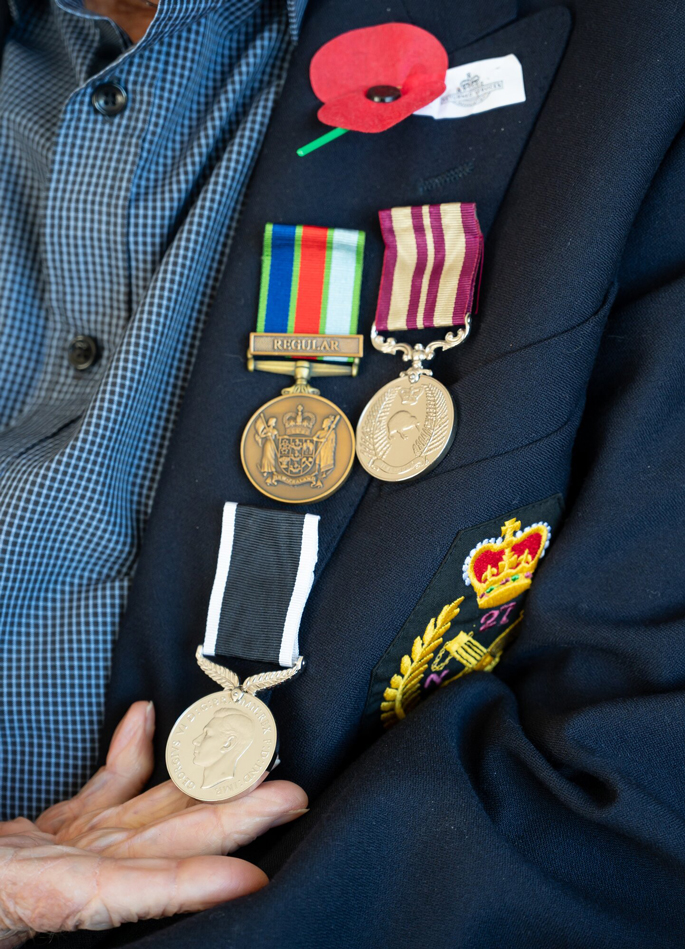Alaric “Whitty” Whitmore lifts his trouser leg to reveal a bandage that protects the skin damaged by radiation 80 years ago when he walked through the ruined city of Hiroshima.
“People don’t realise what it is,” said the 99-year-old Ohauiti resident, referring to his wounds. “Muggins me was wandering around six weeks after the bomb in shorts and boots, no shirt with a tin hat. I really copped it.”
Years younger
It’s just one of the physical reminders of World War II, which he left for as a teenager after persuading his mother to sign the form claiming he was 18. He was actually several years younger.
.jpg)
Alaric "Whitty" Whitmore, aged 99, holds a framed copy of his military photograph. Photo / Brydie Thompson
“I just wanted to travel,” said Whitmore of his naive imaginings as a boy eager to see the world. “Mum had a brother in the New Zealand Navy and another who’d died in the Battle of Britain.
“She said: ‘No’ and I thought that was the end of it, but I woke up the next morning and she said: ‘You got that paper? I’ll sign it, but you come home’.”
After training at Burnham Army Camp, Whitmore joined the 27th Machine Gun Battalion 2nd NZEF in Tunisia.
Sergeant
It wasn’t long before he was promoted to sergeant and one day, on a march across open land, he was injured by a stray bullet, which exited through a scar left by a childhood appendix operation. Whitmore’s men arrived at the Battle of Monte Cassino the night before it ended in May 1944 and were immediately placed on the front line.
“It wasn’t nice,” said Whitmore. “There’s nothing to tell you about being in action but you stuck with your mates. We looked out for each other.”
He was still in Italy just over a year later, when the war ended and Whitmore was reassigned – “You didn’t question; you just went” – but first, he kept his promise, flying back to New Zealand to see his mother before joining the advanced guard to set up J Force in Japan.
“I was in charge of an area around the size of the North Island,” he said. “We had no maps and it would take six months to get all the gear shipped from Italy, so I was kitted out with gear and a Jeep by the Americans. My job was to find buildings that would be suitable for barracks and check bridges were safe for heavy vehicles.”

Former sergeant Alaric "Whitty" Whitmore’s war medals pinned on his suit. Photo / Brydie Thompson
Hiroshima was on the way to where Whitmore was to be stationed.
“I got off the train to have a look. The bomb had killed millions and people were still dying at a rate of eight every day from radiation poisoning while we were there.”
Sad
It was a friend who suggested his life story would make a good book. Although reluctant at first, he agreed and Whitty’s story: The Life and Times of Alaric Davenport Whitmore was released in 2020.
This Anzac Day, when Whitmore pulls on his blazer that’s adorned with medals to attend the ceremony at Tauranga cenotaph, his thoughts inevitably turn to the friends he’ll never see again. “It makes me feel sad for all the people who didn’t come home.”



0 comments
Leave a Comment
You must be logged in to make a comment.